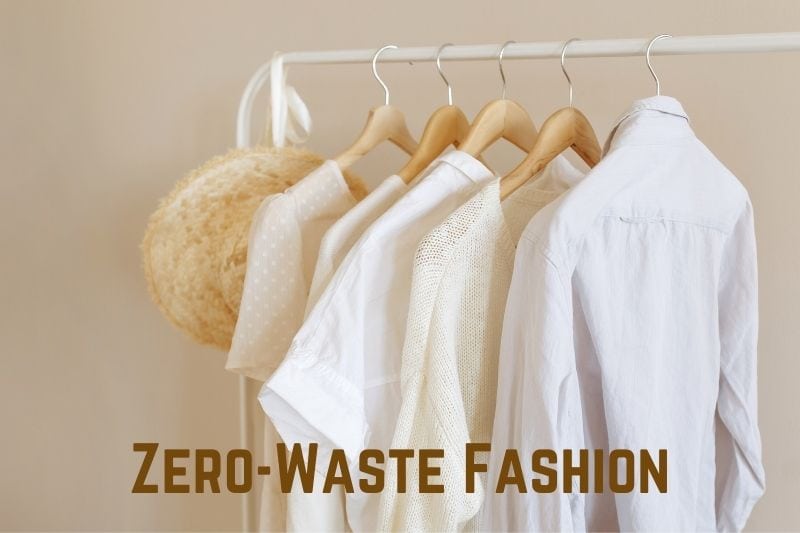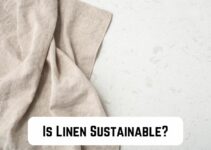This year we are in crisis. Excessive consumerism is a growing tumor in society and the need for more has never been greater.
But there are some of us who strive to make more conscious choices and be kinder to the planet. Enter zero waste.
Zero waste isn’t only for food, but it also applies to all aspects of life including our clothing choices. Sustainable fashion as a whole has a market value of US$7.57 billion and is expected to grow to US$10.28 by 2026.
Not only does this movement mean less trash in landfills, but it also lessens the carbon footprint of the fashion industry, which is one of the biggest polluters of the planet.
Let’s get to know the concept of zero-waste fashion and how we can use it to change the world for the better!
Read: Is Cider Fast Fashion? Or Is It Ethical and Sustainable?
What is Zero-Waste Fashion?
Zero-waste fashion is a design approach that aims to eliminate textile waste in the production process. It involves creating clothing patterns that use every inch of fabric, leaving no scraps or leftovers.
This approach to fashion design is environmentally friendly because it reduces the amount of textile waste that ends up in landfills both in the form of unsold garments and the offcuts and scraps generated during the production process.
Zero-waste fashion also encourages the use of sustainable materials and ethical production practices, making it a more sustainable and responsible alternative to traditional fashion.
To effectively implement zero waste, not only should you choose garments made from sustainable or recycled materials, but you should also incorporate efficient techniques in cutting to use as little fabric as possible. Designers should create garments from durable materials with timeless designs to last longer than a few years.
Here are some key components and practices of zero-waste fashion:
- Pattern Making: Traditional pattern making often results in discarded fabric scraps. Zero-waste fashion uses patterns that fit together like puzzle pieces, ensuring that no fabric is wasted.
- Fabric Usage: Using every piece of the fabric bolt, from selvage to selvage, is vital. This might mean designing garments that consider the fabric’s width and characteristics.
- Design: Designing with waste minimization in mind. This might involve creating multi-size or adjustable garments, reversible designs, or items that can be worn in multiple ways.
- Sustainable Fabrics: While not strictly a part of zero-waste fashion, using sustainable and biodegradable fabrics often goes hand in hand with zero-waste designs. Examples include organic cotton, Tencel, hemp, and bamboo.
- On-Demand Production: Instead of producing massive quantities of garments that might go unsold (and potentially end up in landfills), some zero-waste fashion brands produce garments only when ordered.
- Recycling and Upcycling: Incorporating leftover or waste fabrics from previous collections into new designs.
- Longevity and Durability: Designing garments that last longer reduces the need for frequent replacements, reducing waste. This can be achieved by selecting high-quality materials and employing durable construction techniques.
- End-of-life Considerations: Designing garments that can be easily recycled or composted at the end of their lifecycle, or providing programs where customers can return used garments for recycling or upcycling.
- Education and Transparency: Educating customers about the waste in the fashion industry and being transparent about production processes can influence consumer behavior toward more sustainable choices.
Why Zero-Waste Fashion?
Zero-waste fashion is important, as it negates the industry’s enormous environmental impact on our planet. Fashion production has doubled ever since the 2000s, and most are using cheap synthetic materials such as polyester.
As things have gotten so cheap, people easily discard clothing after being worn a few times. Even worse, a survey found that 20% of clothing in the US is never worn.
Less than 1% of clothing is recycled, as a result over 53 million metric tons of clothes are discarded or incinerated every year. Clothes are not the only waste the fashion industry produces, unnecessary packaging and by-products also contribute a significant amount of waste.
The fashion industry is responsible for 10% of greenhouse gas emissions and 20% of wastewater, which is more than the aviation and shipping sectors combined. That’s why fashion is now moving toward more sustainable practices, as it aims to mitigate these impacts by encouraging more environmentally friendly methods such as zero waste production.
These methods involve using biodegradable materials, low-impact dyeing, and closed-loop production. It also promotes a more circular economy by repairing, recycling, and upcycling garments. In the end, less waste and harmful impacts are imposed on our planet.

Different Types of Zero Waste Fashion
There are plenty of ways to implement zero-waste fashion principles. If you’re wondering what you can do to contribute to the zero-waste fashion movement, here are some options that you can easily do:
Upcycling
Upcycling is the process of enhancing an existing product. Instead of throwing your garments away when you’re bored, you can upcycle them. There are many ways for you to change and alter your wardrobe to make your clothes more interesting!
For example, you can turn your trusty ol’ t-shirt into a crop top, or you can create shorts from denim jeans.
Repurposing
Repurposing might sound similar to upcycling, but the difference is repurposing will change the product’s original function.
Some easy repurposing projects from your fashion garments are creating pillowcases from your sweaters or patchwork blankets from shirts. This can also go the other way around, and you can create your dresses from blankets or other fabrics in your house.
Minimalistic fashion
This one might only be suitable for you if you enjoy a minimalist lifestyle. Minimalist fashion is owning only a minimal amount of clothes and choosing timeless quality pieces that will stay in style for longer.
Often, minimalists will choose items that have clean lines, neutral colors, and simple shapes. That way, it’s easier to mix and match clothing to suit different occasions.
Slow fashion
Slow fashion is choosing brands and clothing that fulfill sustainable philosophies. Some of the key philosophies are shifting from quantity to quality, transparency in its supply chain and practices, and using natural fibers or old textiles for upcycling.
Slow fashion does not refer to its speed but rather an approach that’s more aware of the impacts of products on workers, communities, and ecosystems.
Thrifting
One man’s meat is another man’s poison! Give someone’s old clothes a new lease on life and buy second hand. Thrift stores usually give a portion of their profits to charities, so not only will you be supporting a good cause, but your wallet will also thank you!
How Can a Brand Achieve Zero Waste Fashion?
Here are some techniques a brand can adopt zero waste fashion:
- Being as efficient as possible when creating garments or cutting materials to their full capacity.
- Create designs that are timeless and can be worn for a long time by customers. Choose classic cuts that are clean and essential for the wardrobe.
- Use environmentally friendly biodegradable materials. These materials should also be durable, so they won’t disintegrate and last longer.
- Use recycled materials, such as upcycling garments from other producers to create new pieces.
- Use deadstock materials. Deadstock is a leftover fabric that can’t be used for its original purpose. This might come from brands who ordered too much fabric, canceled orders, or mills producing incorrect colors or slightly damaged fabrics.
- Implement a made-to-order model. This model implies that you only produce items that have been sold. Producing based on orders means you’ll avoid waste from overproduction.
- Use advanced technology such as 3-D printing and digital sampling instead of traditional samples. 3-D printing means precise cutting which leads to less waste. Digital sampling as a visual aid will help you reduce waste during product development stages.

Challenges and Hurdles in Adopting Zero Waste Fashion
Changing our behaviors always comes at a cost and zero waste is no exception. Here are some of the challenges you might face when adopting zero-waste fashion:
Convenience and accessibility – The first challenge is to find a zero-waste alternative near you. As of now, zero-waste fashion is not the norm, and that’s why there are limited choices. This is especially true if you live in a remote area.
You can counteract this by finding zero-waste brands online, but go local as much as possible because shipping creates carbon emissions that can negate your zero-waste initiative.
Expensive prices – Sustainable goods are often higher priced because they use higher quality materials and advanced techniques. Think of them as an investment that can last you much longer than fast fashion products.
Breaking old habits – Giving up on your old habits can be very difficult when you start. Always go for a slow build-up to avoid relapsing. Don’t go straight to opting for a minimalist wardrobe, but try buying fewer products and working with what you already have instead.
Zero Waste Fashion Brands
Are you ready to make better choices? If you are, check out some of these zero-waste fashion brands!
Read: Is Free People Ethical, Sustainable, or Fast Fashion?
Patagonia
This top-quality outdoor apparel brand has its zero-waste collection called ReCrafted. The line is made from Patagonia’s products that are sent back by customers. These garments might be old or damaged, so they will be sent to the Repair Center and sorted by Patagonia’s Worn Wear team. After that, the garments will be deconstructed and remade into unique pieces.
Christy Dawn
This is the perfect brand for those who love the country aesthetic. Christy Dawn focuses on regenerative processes that can heal the planet. They use deadstock fabrics and efficient construction methods that ensure the pieces last for a long time. Their designs have neutral colors that are versatile and won’t go out of style.
Anekdot
The German company makes lingerie and swimwear using leftover fabrics from other producers. Their designs are sleek and well-made, with small decorative details that make them unique. The cutting also follows your body’s natural curve in a flattering way.
Armed Angels
If you like a more casual brand, Armed Angels’ Circular Tee and Circular Denim collections are zero waste lines that ensure all resources in manufacturing are kept in a loop. The pieces are created using old Armed Angels’ returned goods from consumers.
If you’re interested in contributing, you can also return your Armed Angels t-shirt or denim via their “take-back system”.
Malaika
Are you thinking of creating a minimalist capsule wardrobe? Malaika is the perfect choice, as the brand focuses on comfort, versatility, and timelessness. Their simple and sleek designs mean you can style it in any way you see fit.
The founder uses innovative sewing techniques, ensuring no materials are being wasted throughout the production process.
Final Thoughts
Going zero waste isn’t easy, but we sure can try! If we all avoid fast fashion companies and go for ethical, reputable ones, we’ll take some baby steps to improve the world for the better.




